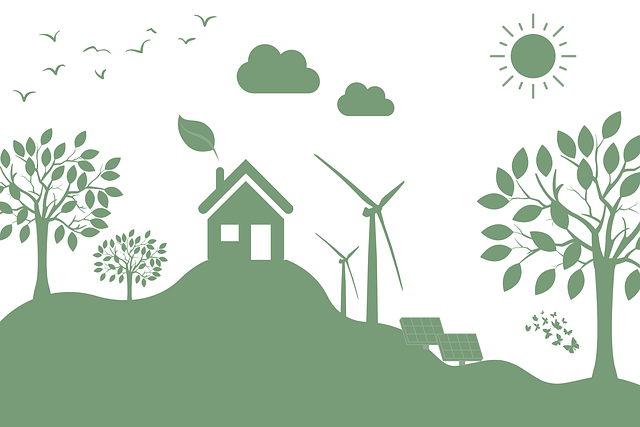Sustainable building and living is a topic that has gained significant attention in recent years. With the increasing awareness of climate change and the need to reduce our carbon footprint, sustainable living has become a necessity. Sustainable building and living involves designing and constructing buildings that are environmentally friendly and energy-efficient, and adopting a lifestyle that is sustainable and eco-friendly.
Sustainable building practices are essential for reducing the impact of buildings on the environment. Buildings are responsible for a significant amount of energy consumption and greenhouse gas emissions. Sustainable building practices aim to reduce energy consumption and greenhouse gas emissions by using renewable energy sources, such as solar and wind power, and by using materials that are environmentally friendly and energy-efficient.

One of the most important aspects of sustainable building and living is energy efficiency. Energy-efficient buildings use less energy than traditional buildings, which helps to reduce greenhouse gas emissions and save money on energy bills. Energy-efficient buildings are designed to maximise natural light and ventilation, which reduces the need for artificial lighting and air conditioning. They also use insulation and other materials that help to reduce heat loss in the winter and heat gain in the summer.
Another important aspect of sustainable building and living is the use of renewable energy sources. Renewable energy sources, such as solar and wind power, are clean and sustainable sources of energy that do not produce greenhouse gas emissions. Solar panels can be installed on the roof of a building to generate electricity, and wind turbines can be installed on the property to generate electricity as well.
Sustainable building and living also involves the use of environmentally friendly materials. Environmentally friendly materials are those that are made from renewable resources and are biodegradable or recyclable. Examples of environmentally friendly materials include bamboo, cork, and recycled steel. These materials are used in the construction of buildings to reduce the environmental impact of the building.
In addition to sustainable building practices, sustainable living practices are also essential for reducing our carbon footprint. Sustainable living involves adopting a lifestyle that is eco-friendly and sustainable. This includes reducing energy consumption, reducing waste, and using environmentally friendly products.
One of the most important aspects of sustainable living is reducing energy consumption. This can be achieved by using energy-efficient appliances, turning off lights and electronics when they are not in use, and using public transportation or carpooling instead of driving alone. By reducing energy consumption, we can reduce our carbon footprint and save money on energy bills.
Another important aspect of sustainable living is reducing waste. This can be achieved by recycling, composting, and using reusable products. Recycling helps to reduce the amount of waste that ends up in landfills, and composting helps to reduce the amount of organic waste that ends up in landfills. Using reusable products, such as cloth bags and water bottles, helps to reduce the amount of waste that is generated.
In conclusion, sustainable building and living is essential for reducing our carbon footprint and protecting the environment. Sustainable building practices, such as energy efficiency, the use of renewable energy sources, and the use of environmentally friendly materials, help to reduce the impact of buildings on the environment. Sustainable living practices, such as reducing energy consumption and reducing waste, help to reduce our carbon footprint and protect the environment. By adopting sustainable building and living practices, we can create a more sustainable future for ourselves and for future generations.
